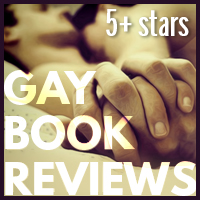
Title: Run
Author: Annie Kaye
Publisher: Dreamspinner Press
Release Date: February 26, 2016
Genre(s): Contemporary M/M romance
Page Count: 260
Blurb:
Amid the tumult of the Iowa Democratic primary, young but brilliant speechwriter Tom McAlindon meets Nathan Harris, the deputy campaign manager for an opposing candidate. Their acquaintance is strictly professional until an impetuous kiss on a cold winter night leads them into a secret romance. As their feelings deepen, both men struggle with the complications of keeping the relationship separate from their jobs and the inner workings of the campaigns.
But in the nation’s most high-stakes political game, no secret is truly safe. When an observer realizes their connection, Tom and Nate discover that striving for the best of both worlds has a much higher cost than they bargained for… and that love can’t survive while Nate is hiding the truth from Tom.
Gay Book Review would like to welcome today’s guest author, Annie Kaye!
For a number of reasons, not every author is comfortable being “out” as a writer. Writing in general, perhaps with the exception of journalism, is a pretty solitary endeavour; and before an author is published in whatever genre they write, many are hesitant to self-identify, especially those of us who have a “real” job.
But at times when I have talked about my writing, what I encounter most often is curiosity: how do you do that? Do you have any tips on how to get started? What’s your process?
So today I’d like to share what my process was for my novel, “Run”, which is being released by Dreamspinner Press on February 26.
With Run, I began with just the kernel of an idea, inspired by a few lines of a song. The song is over 20 years old, and I’d heard it many times in the first decade-and-change after it was released, without any particular affinity for it. I don’t know when exactly it inspired an idea, but once it found root, over months and years, every time I heard the song, the idea formed a little more in my mind. Eventually, when another story I’d been working on sort of fell to pieces in my hands*, I decided to sketch out an outline based on this thought that had been rattling around in my brain.
*Sometimes it’s just not working and it’s not going to. Put it in your “Abandoned” folder and let it go.
The outline is where the bones of the story of the built, and for me it’s really a crucial starting place for a longer piece. It’s where I imagine the characters, name them, give them a place to live and work, and decide what I’m going to do to them. If the story is very timeline-sensitive (for instance, Run takes place during the Democratic primaries), the outline is where I build the structure of what’s happening around the characters – seasons, holidays, events that will shape the story.
Something else I do is to watch the weather for the location(s) in which the story is set. My laptop usually has several weather-monitoring apps running in the taskbar – one for where I live, one for where I work, and one related to my writing. Right now my extra one is Duluth, Minnesota – take that for what you will. But I find the weather essential to setting the scenes I write, at least in my head, whether or not I mention it in the manuscript. Perhaps it has to do with where I live – we have four distinct seasons here in Ontario, so it makes a big difference whether a character can slip on a pair of flip-flops to go outside or if it takes them five minutes to pile into boots, mitts, hat, coat…you get the idea.
And then I write.
Slowly, like cautiously trying to extract a thread that keeps snapping off.
Intermittently, as the story plays out repeatedly in my head during the quiet moments of the intervening weeks (months).
Carefully, stopping to fact-check what seems like every fourth paragraph, or to create a spreadsheet: if Character A was this old in a specific year, how old was Character B? How old when this other thing happened?
And after some time has gone by (two full years, in the case of Run) the story reaches its end, hopefully somewhere close to my approximate word goal.
Then I edit. Editing alone is… I sat for two full minutes trying to think of the right word here (see “Slowly”, above). It’s tough, going back through your manuscript and looking for more than just spelling and grammar mistakes; looking for the holes, the flaws (because it’s full of them, I promise) on your own. Another two years go by, during which some trusted friends read and give their honest, constructive feedback, and I come back again to the manuscript, trying to see it and to find a way to implement the changes they have suggested.
Finally, when I feel there’s nothing more I can do on my own to improve it, I submit it.
I’ll be honest, before returning to Dreamspinner (they published my novella Beyond the Spanish Road in 2012), I made a concerted effort to get representation by a literary agent. I did have one request the rest of the manuscript for Run, but ultimately declined. It’s tough out there, because agents are being queried as often as most of us are getting business proposals from Nigerian princes…maybe more.
Fortunately, after a heart-to-heart with my bestie, I decided to query Dreamspinner again, and I can say I have found a home there.
Editing with Dreamspinner’s staff was such a different experience than trying to do it on my own. My senior editor is a friggin’ rock star, and stepped me through the process as patiently and gently as a fairy godmother. My content editors – three rounds of edits, a different pair of eyes each time – were very knowledgeable and insightful. I had looked at the story by myself for so long that I just couldn’t see it anymore; their suggestions were very helpful, and beneficial not just to the story, but to me as a writer. I learned things from their comments and notes that helped me identify my own writing traps and patterns (the phrase “overall repetition of summary material” will make my palms sweat for the rest of my life, I’m afraid).
Content editing took about two and a half months, and some substantially rewrites. By the end of Round 3 I’ll admit I was reaching the point of 100% saturation with the story, and was feeling like I never wanted to look at the darn thing again (and then it was time for proofreading). But there were some really thrilling moments for me, too. Seeing the gorgeous cover art created by Anne Cain that captured exactly what I had envisioned; the day I got to see the galley proofs with my words exactly as they would look on the printed page, and looking so professional and final…it made it all real and totally worth it.
For me, who isn’t always the shining star at finishing what I’ve started, the accomplishment has been as much about carrying the process through to the end, as it is about being published. And I’m happy to report that, as of a few weeks ago, I’m out there and I’m loving it!
Many thanks to Gay Book Reviews for the opportunity to share this with you all. xo
About Annie

Annie Kaye’s first ‘real’ job was a career in insurance. After fourteen years, the industry had wrung from her everything it could, leaving her desperate for a change that would allow her to flex her long-dormant creativity. She left her job and took several months off, planning to spend them on the couch in her yoga pants. Not six weeks had elapsed before she’d rediscovered a long-lost love: putting words to paper. Since 2009 she has written almost a million words of fiction, each piece bearing a common theme: love and relationships between gay men.
Balancing family, work, creative efforts, and community involvement – and trying to hit the gym once in a while – are all near the top of Annie’s to-do list. At her home in the woods of rural Ontario, Canada, she endeavors to carve out her writing space from amid the joyful noise created by her husband, their two children, one dog, one cat, and the woodpeckers who sharpen their beaks on her windowsills.














Leave a Reply
Be the First to Comment!